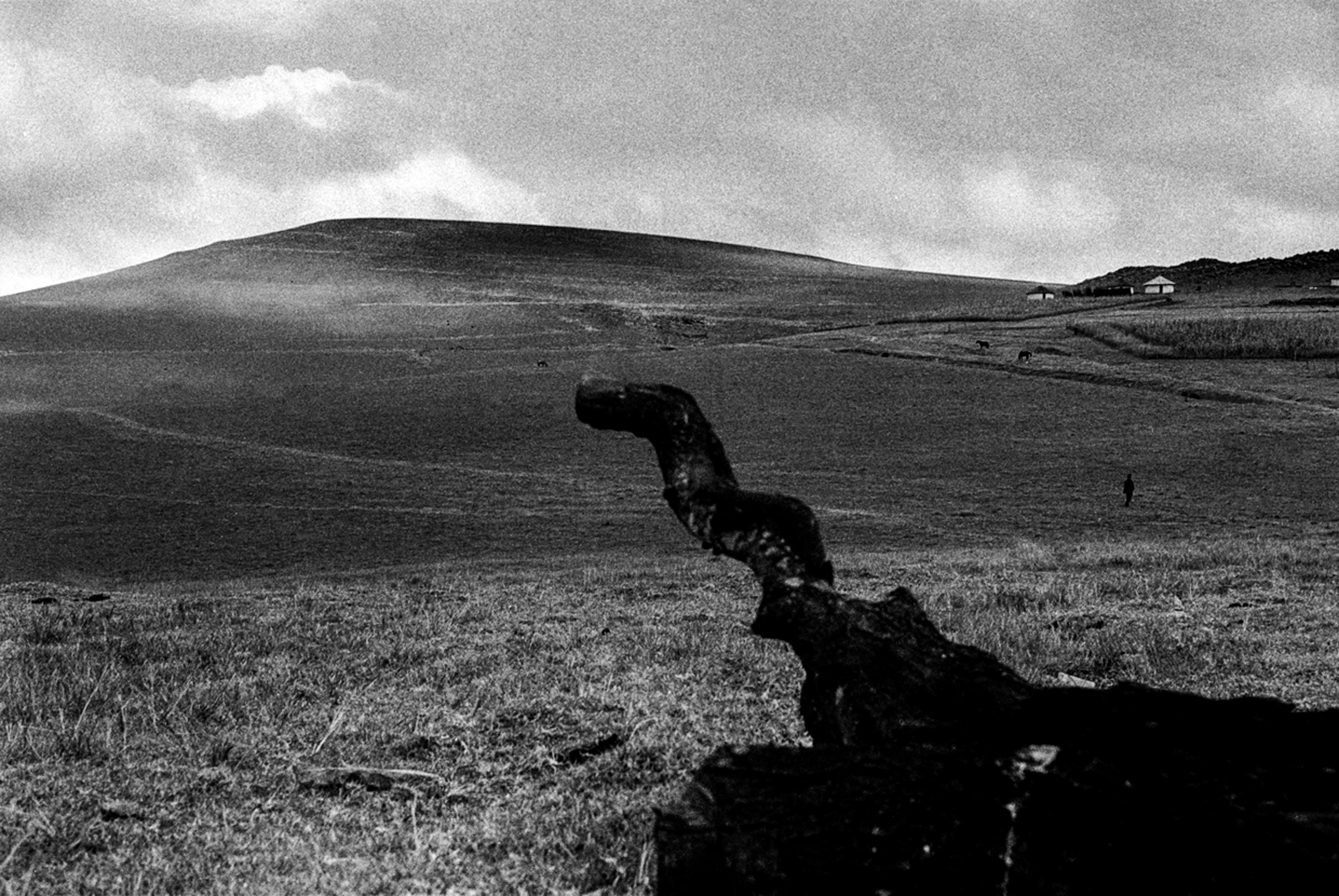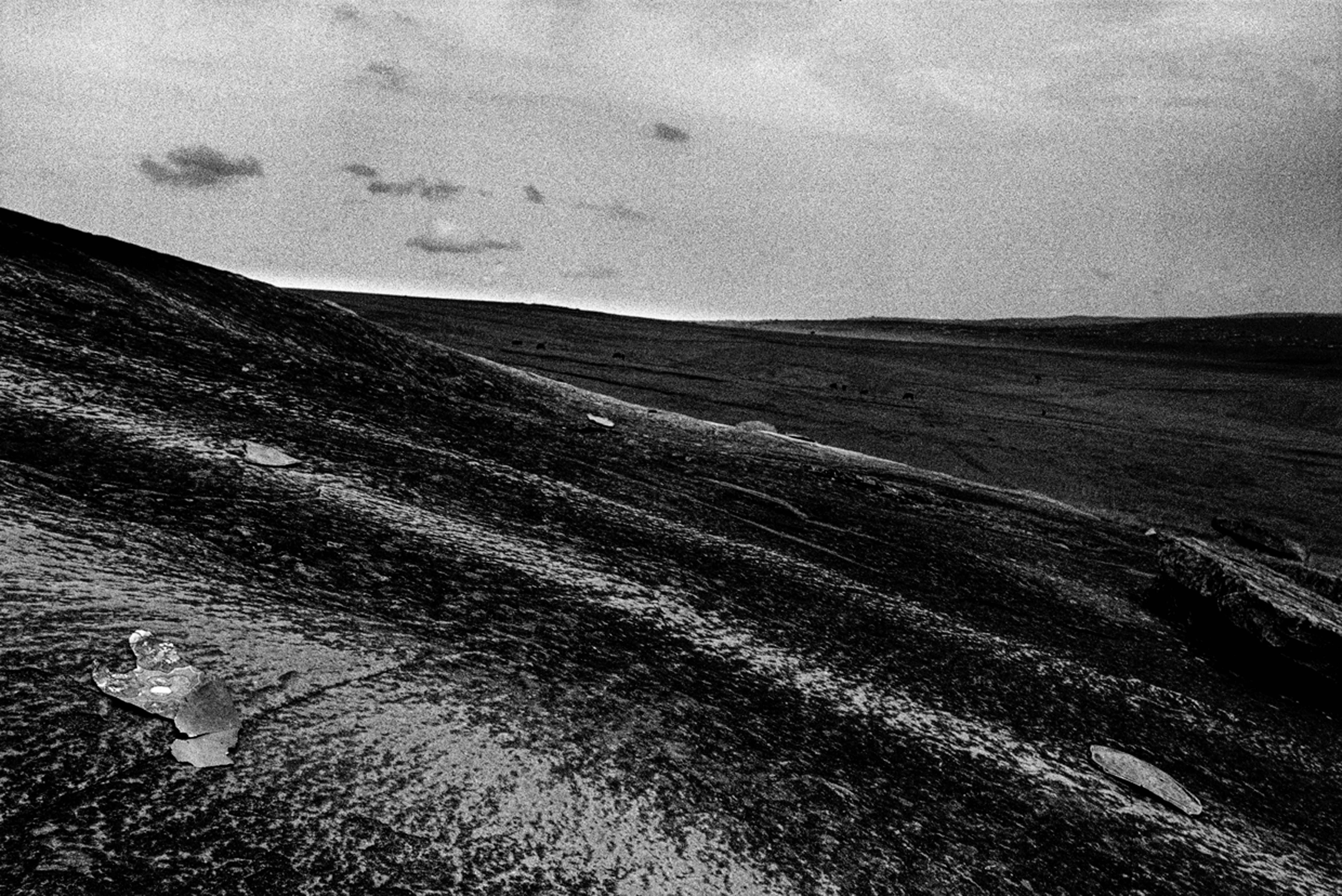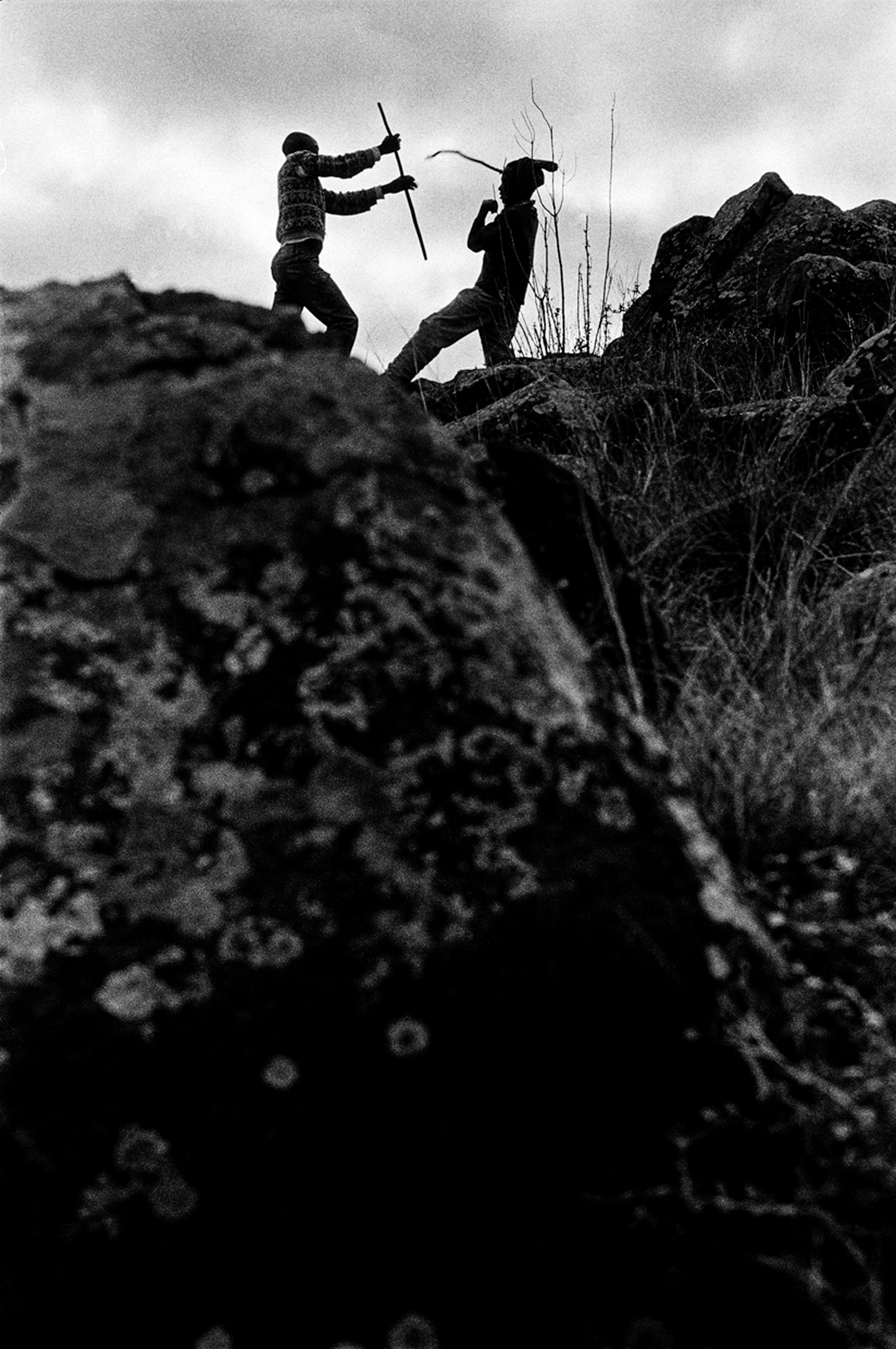Backdrop to freedom: In his latest exhibition, Mandelas Roots, Bonile Bam uses the landscapes of Nelson Mandelas childhood to tell significant parts of the struggle heros story in a new and lyrical way.
In this collection of 27 photographs, which transport us to the statesman’s Eastern Cape childhood stomping grounds of Mvezo, Mqhekezweni and Qunu, Madiba’s visage appears only twice, but even then it is used as a tool to centre our gaze in the landscape.
Running at the University of Johannesburg’s four campuses for two months since Monday, the work is the culmination of a three-year project that sprang from a professional meeting between Madiba and Bam in 2005.
Although Bam succeeds in making us walk in Mandela’s footsteps by avoiding superficial human interaction, the passage of time seeks answers to other questions, making this a legacy project and one that deals with topical concerns.
“Land is such a topical issue now,” says Bam, about the resonance of his approach. “Everybody is talking about the land. But now I feel like it is getting more significance. It shows the value of land. That’s what I feel right now.”
Anthony Sampson, author of Mandela: The Authorised Biography, describes this part of South Africa as “the most beautiful but also one of the poorest regions of the country”.
Looking at Bam’s work, one is drawn to the more idyllic images conjured up by Sampson in his biography, those where Mandela “wrote vividly about the splendour of the hills and streams, the pleasures of swimming in the pools, drinking milk straight from the cows’ udders or eating maize roasted from the cob”.

[Julukuqu Mountain Mqhekezweni (2005) (Bonile Bam)]
“Sometimes we forget that these places don’t have the necessary resources,” says Bam, in Johannesburg’s Melville, the night before his exhibition opened. “People are still struggling here but there is hope and people are still surviving. I didn’t want to show poverty but to show a way of life.”
For Bam, depicting Mandela as “coming from an ordinary background” is important for motivational reasons but it also stretches us in other ways to consider his varied meanings as a symbol. Here, Bam was aided by technique and composition.
Wide, often grainy expanses of land predominate the collection. People appear occasionally, riding horses or walking at a great distance, with their backs turned, dwarfed by the pre-eminence of the ground they walk on.
“In my view, it expresses freedom,” says Bam of his wide, deep focus in many of the photographs. “These villages are so open for people who live in these spaces. They can move freely. I didn’t want to make it too tight as it was listening to Madiba [speak about his childhood] that inspired me to do this project.
“I read Long Walk to Freedom after [I had started]. I only read it until it got to that part where he is talking about his childhood. So linking to what he was saying and what I captured there, I think they are linked somehow.”
Bam’s photographs, produced during several trips, were preceded by mapping out the significance of particular areas in Mvezo, Qunu and Mqhekezweni. In this way, they are able to unearth unsavoury truths.

[On the Sliding Rock, Qunu (2005) (Bonile Bam)]
“There is no focus on Mqhekezweni,” he says. “Everybody talks about Qunu and Mvezo. That’s important because members of the Mandela family are from Mvezo and Qunu. In Mqhekezweni, there is no direct member of Madiba’s family. Nobody alive is looking after the legacy of the chief who was responsible in bringing up Mandela.”
Bam was handpicked to photograph an event at the Nelson Mandela Foundation in 2005. To say that meeting with Madiba and subsequently gaining increased access to his family life had a significant effect on the trajectory of Bam’s work would be an understatement. But Bam doesn’t play that hand. His cards are of allegorical, if ominous, biography.
The black-and-white images, textured by Bam’s decision to shoot on film, achieve a heightened elemental quality. The threat of rain, symbolic in any number of ways, seems omnipresent. Other images seem frozen in a capsule, as if 1913 had yet to occur. Seen this way, Mandela’s Roots is an invitation to time travel.
A widened and refurbished N2 cuts through Qunu. As national roads do, they drag along with them the promise of better and busier lives. Often this translates to little more than the whir of traffic, the seasonal trade in whatever the motorists don’t mind stopping for and the constant glare of the tourism spotlight. What development may come in the form of street lights and shopping hubs is often accompanied by the contradictions of said “development”.
The lopsided wire mesh fence in the photograph Way of Life, taken in Mqhekezweni, or the winding gravelly path to Mqhekezweni that might never be tarred, as pictured in In Search of Dignity, seems to point to this tension.
Beyond probing the status quo by walking in the footsteps of an icon, the work also displays the ingenuity of its creator, coming at a time when Bam was growing increasingly weary of his status as a news photographer.
“I have always been a documentary photographer,” he says. “I do work for NGOs [nongovernmental organisations] in order to support my projects. I felt like I was losing the creativity when I was in the newspapers. I was given reject assignments. I have to say this directly — there is still racism going on in the newspapers. I felt the need to go out and express myself outside because I needed to protect the way I saw things.”

[Traditional Stickfight (2006) (Bonile Bam)]
He says, as with his old but timeless series Initiation of the Mind, exhibited in January 2000 as part of a Swedish exchange programme, he prefers to keep his equipment as basic as possible.
“When I came to the Market Photo Workshop as a student, I didn’t know anything about photography. I started using a 50mm lens, which is the standard lens, and an SLR camera.
“The initiation pictures were done using this standard lens.
“But when I left Market Photo Workshop to do theatre performances, dance performances, live music and all that, I was forced to use a longer lens to keep the distance.”
For now, Bam is interested in forging a new, lyrical way of asking old, nagging questions. For instance, he doesn’t buy into the easy, dichotomous tropes of framing his subject. For him, Mandela is a complex figure, a man who was interested in progress and laying the groundwork for others to pick up on.
That complexity and that spirit is carried through in Bam’s approach.